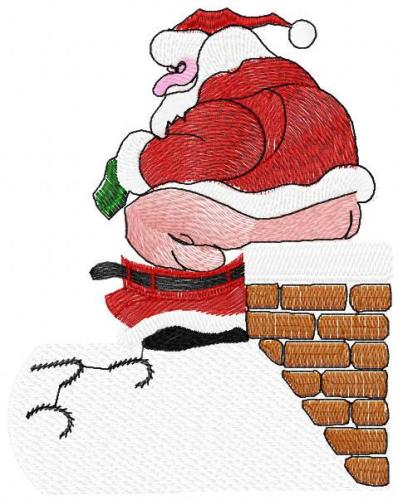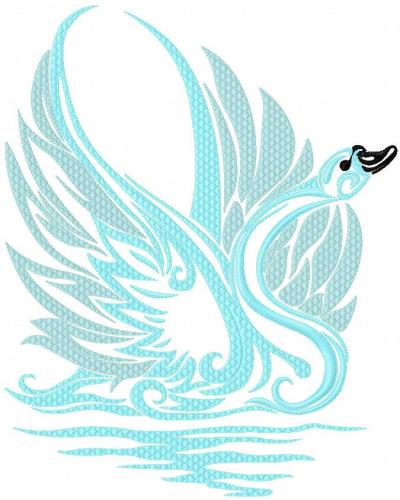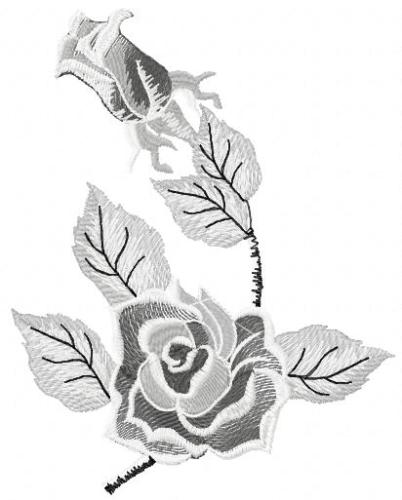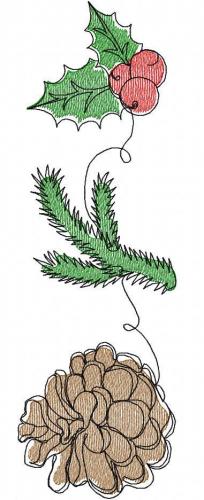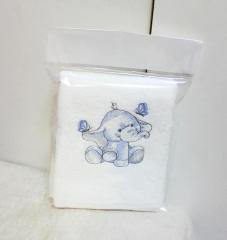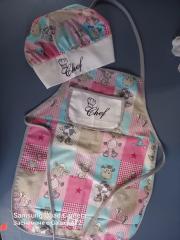
Original text by Marina Belova
Sometimes I think that it is strange to even ask how to embroider on velvet, for everything seems to be obvious here. This is because I have some experience of the embroidery on velvet and can share these simple rules with you.
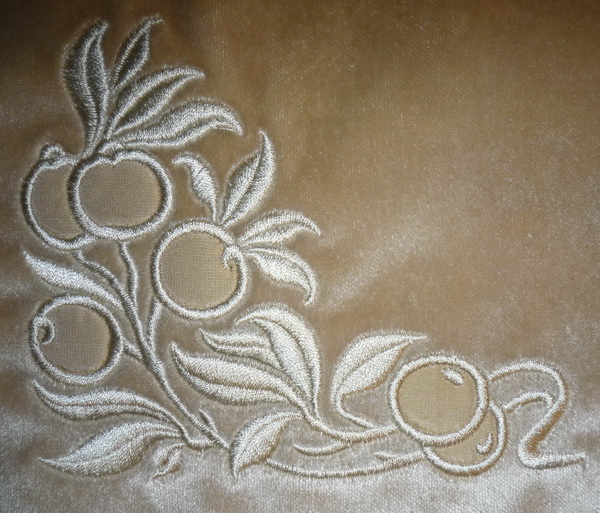
The main (commonly recognized) rules of machine embroidery on velvet are as follows:
- No hooping: the hoop flattens the pile and leaves visible traces. Use only a magnetic hoop or an adhesive.
There are different kinds of adhesives. You can use an adhesive stabilizer with a sticky side covered with a protection layer; it doesn't need to be pressed to the fabric with an iron – Filmoplast, for example. I, for one, don't like Filmoplast – it is hard to remove. Especially if you embroider a big design and leave it for a while – in that case, the pile will come off with it. But it secures the fabric well.
You can use an ordinary stabilizer, sprayed with temporary spray adhesive, and then stick the fabric to it. But with designs containing a large number of stitches you can only use this one at your own risk – the velvet will detach during the embroidery.
I've seen lots of recommendations on choosing a stabilizer. Some write that a heavy-weight cut-away should be used for chevrons, and some – that a tear-away middleweight one. I think that the suggestion to use a cut-away looks strange here. I use a tear-away one. Or nothing at all if the velvet itself is thick and stable so that it can withstand hooping.
There is also a very popular advice – to additionally secure the velvet already attached to the stabilizer with a basting stitch along the perimeter of the design. In my view, not every kind of velvet will endure the additional needle penetrations, and there will be leftovers after ripping the thread out. Better to test every time.
- The velvet should be covered with a water soluble stabilizer (film) so that the pile doesn't peek between the stitches. This film should be removed after the embroidery. This may prove not to be the easiest task. There are the designs with the small details, you know. And the velvet shouldn't get wet, so you'll quite busy with it.
Besides, there exist contradictory opinions on when to remove the film. Some people write that it should be removed after embroidering the underlay and before the finishing layer of stitches. But the majority insist upon waiting until the embroidery is completed. I'm with the latter, because, to me, the first option only complicates the design. Also, you won't stop the machine just to tear off the film, will you?
Alternatively, a heat sensitive stabilizer is suggested in such cases, for instance, Thermogaze. That seems more than questionable to me, though.
- The embroidery threads may vary greatly in composition and thickness.
- The most standard needles like R or SES should be used. Their thickness should correspond to the thickness of the threads.
Velvet fabric may vary in composition – you can find silk, cotton, rayon, polyester velvets and so on. Some of these are very stable, and some very stretchy (knitted velvet). In the case when velvet is secured on a sticky base and not hooped, it does not matter. But if you are going to hoop your velvet, then its stability is of a great importance.
I think everybody knows that velvet is a piled fabric. The pile ranges from very short, almost invisible, to considerably high. I used to embroider on velvet with the pile about 5 mm high. Such velvet is very similar to the fake fur, yet it is velvet.
Besides its height, the pile may vary in direction (nap). It is very easy to know if the pile has any – just slide your hand across it in several directions.
How can this knowledge help or hinder you in machine embroidery? If you don't hoop your velvet but use the adhesive instead, it is no help. But if you do the hooping, it is very important to know how the pile is inclined.
No, I didn't mention hooping by mistake. A long time ago I, too, was surprised by the possibility. But, as the experience has shown, it can be done. But instead of the hoop, where we don't have any influence over the character and direction of the pressure applied, use the frame, as on the industrial embroidery machines. That is, the one that has special clamps. The clamps should be fastened in the direction of the pile. In this case, the damage to the pile will be minimal (provided that you use a Tajima-like frame). Also, of course, you should add a piece of soft fabric for protection – flannel, for instance. Clamps leave traces, too, but they are much less visible than the ones from the usual hoop. Besides, if you have a good steam-generator with a brush, you can put everything right. Yes, it requires a great deal of experience, no argument here. Nevertheless, it is possible.
Also, last year I encountered a cheap velvet, on which the hoop left no traces – what a pleasure it was to embroider. But to frame stretchy velvet instead of sticking it onto the paper is sheer agony.
While I was writing, one more way of securing velvet sprang to my mind – pinning it onto the hooped water soluble film. One hell of a task. But can be used for extremely delicate velvets.
There are no digitizing recommendations for the ordinary velvet except the following:
- Avoid small details, especially the ones embroidered with the running stitches – remember that you'll need to remove the film from under them.
- Besides, they will sink in the pile because of their size.
- Avoid big areas filled with lots of stitches – there is no stability in sticking the velvet to the paper, it will begin to detach, and the embroidery will be distorted as the consequence. This means that we'll need to substitute the fills for something else, such as an applique, which, by the way, looks fantastic on velvet.
- The underlay should be of the most ordinary kind, corresponding to the size of the elements and stitch lengths. And to the desired effect, of course. Although, I've frequently seen the recommendation to place at least zigzag under the finishing layer of satin stitches and the lattice under the fills. But if you use film on top of the pile, even the ordinary designs will look good on velvet without any strengthening layer.
- The density of the finishing fills is also standard – 0.4–0.45 mm. The main thing is to prevent the fabric from peeking through.
-
 2
2


